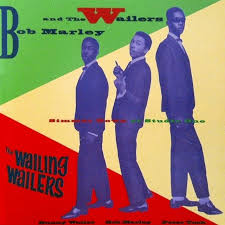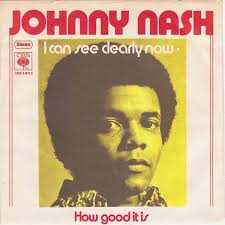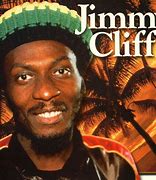UNDILUTED INSPIRATION. Johnny Nash
UNDILUTED INSPIRATION. Johnny Nash
by Norman Warwick
Born in Houston, Texas, Johnny Nash was the son of Eliza (Armstrong) and John Lester Nash. He sang in the choir at Progressive New Hope Baptist Church in South Central Houston as a child. Beginning in 1953, Nash sang covers of R&B hits on Matinee, a local variety show on KPRC-TV; from 1956 he sang on Arthur Godfrey‘s radio and television programs for a seven-year period.

Nash made his major label debut in 1957 with the single A Teenager Sings the Blues, after signing with ABC-Paramount. Nash had his first chart hit in early 1958 with a cover of Doris Day‘s A Very Special Love. Marketed as a rival to Johnny Mathis, he also enjoyed success as an actor early in his career, appearing in the screen version of playwright Louis S. Peterson‘s Take A Giant Step in 1959. Nash won a Silver Sail Award for his performance from the Locarno International Film Festival. Nash continued releasing singles on a variety of labels such as Groove, Chess, Argo, and Warner Bros.

In 1964, Nash and manager Danny Sims formed JoDa Records in New York and released The Cowsills‘ single All I Really Want to Be Is Me. Although JoDa filed for bankruptcy after only two years, Nash and Sims moved on to marketing American singers to Jamaica, owing to the low cost of recording in that country.

Nash had a top five hit in the US Billboard R&B chart with the 1965 ballad Let’s Move and Groove Together. That year, he and Sims moved to Jamaica. Their lawyer Newton Willoughby was the father of Jamaican radio host Neville Willoughby. After selling off his old entertainment assets in New York, Sims opened a new music publishing business in Jamaica called Cayman Music. Nash planned to try breaking the local rock-steady sound in the United States. Around 1966 or 1967, Neville Willoughby took Nash to a Rastafarian party where Bob Marley & The Wailing Wailers were performing. Members Bob Marley, Bunny Wailer, Peter Tosh, and Rita Marley later introduced Nash to the local music scene, and he in turn signed all four to an exclusive publishing contract with Cayman Music for J$50 a week.
In 1967, Nash, Arthur Jenkins, and Sims collaborated to create a new record label, JAD Records, named after their first names Johnny, Arthur, and Danny.
They recorded their albums at Federal Records in Kingston. JAD released Nash’s rock-steady single Hold Me Tight in 1968; it became a top-five hit in both the U.S. and UK. In 1971, Nash scored another UK hit with his cover of Marley’s Stir It Up.

Nash’s 1972 reggae influenced single I Can See Clearly Now sold over one million copies, and was awarded a gold disc by the R.I.A.A. in November 1972. I Can See Clearly Now reached No. 1 on the Billboard Hot 100 on November 4, 1972, and remained there for a month, and also spent the same four weeks in pole position in the adult contemporary chart. The I Can See Clearly Now album includes four original Marley compositions published by JAD: Guava Jelly, Comma Comma, You Poured Sugar On Me and the follow-up hit Stir It Up. A third hit single taken from the album was There Are More Questions Than Answers.
Nash was also a composer for the Swedish romance film Vill så gärna tro (1971) in which he portrayed Robert. The movie soundtrack, partly instrumental reggae with strings, was co-composed by Bob Marley and arranged by Fred Jordan.
JAD Records ceased to exist in 1971, but it was revived in 1997 by American Marley specialist Roger Steffens and French musician and producer Bruno Blum for the Complete Bob Marley & the Wailers 1967–1972 ten-album series, for which several of the Nash-produced Marley and Tosh tracks were mixed or remixed by Blum for release. In the UK, his biggest hit was with the song Tears on My Pillow which reached number one in the UK Singles Chart in July 1975 for one week.

After a cover of Sam Cooke’s Wonderful World in 1976 and Let’s Go Dancing in 1979, Nash seemed to have dropped out of sight for many years, with the exception of a brief resurgence in the mid-1980s with the album Here Again (1986), which was preceded by the minor UK hit, Rock Me Baby. Younger audiences were introduced to his music with the appearance of Jimmy Cliff’s cover of I Can See Clearly Now in Disney’s 1993 hit film Cool Runnings. In May 2006, Nash was singing again at SugarHill Recording Studios and at Tierra Studios in his native Houston.
With SugarHill chief engineer Andy Bradley and Tierra Studios’ Grammy-winning Randy Miller, he began the work of transferring analog tapes of his songs from the 1970s and 1980s to Pro Tools digital format.
On June 25, 2019, The New York Times Magazine listed Nash among hundreds of artists whose material was reportedly destroyed in the 2008 Universal fire.
Sadly Nash, who was perhaps best known for his song I Can See Clearly Now, has died at the age of 80 His son has announced that. Nash, who had been in declining health, died of natural causes at his home in Houston, US, where he was born.
The reggae star, who began singing as a child and made his major label debut with the 1957 song A Teenager Sings the Blues was 32 when he topped the charts with I Can See Clearly Now in 1972, after he had already spent nearly two decades in the business.
Reportedly written by Nash while recovering from cataract surgery, I Can See Clearly Now was a story of overcoming hard times.
The rock critic Robert Christgau would call the song, which Nash also produced, 2 minutes and 48 seconds of undiluted inspiration. and I would wax as lyrical, I think, about the Nash cover, released in the UK in 1969, of Sam Cooke´s Cupid
Nash is survived by his son Johnny Nash Jr, daughter Monica and wife Carli Nash.




Leave a Reply
Want to join the discussion?Feel free to contribute!